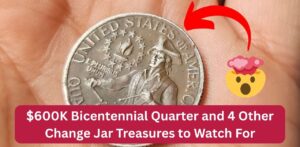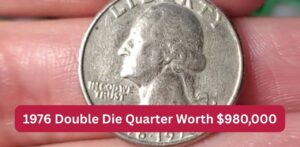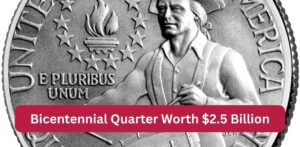A $100 bill might seem like everyday cash — but under the right conditions, it could be worth tens of thousands. In a recent high-profile auction, a $100 bill with a rare misaligned seal error sold for an astonishing $85,000, capturing the attention of collectors and currency enthusiasts alike. If you handle cash regularly, now is the perfect time to take a closer look at your bills.
What Is a Misaligned Seal Error?
Every U.S. banknote features two seals — a black Federal Reserve seal on the left and a green Treasury seal on the right. These are normally printed with precise alignment. But in rare cases, printing mistakes occur. One of the seals, most often the green Treasury seal, may be off-center, shifted too high or low, or even overlapping the portrait on the bill.
This printing mistake is known as a misaligned seal error. Because of the U.S. Bureau of Engraving and Printing’s strict quality control, such errors rarely make it into circulation. That rarity is exactly what makes them so valuable.
The $85,000 Misaligned Seal That Went Viral
A recent auction made headlines when a $100 bill with a severely misaligned green seal sold for a staggering $85,000. The error was dramatic — the seal had shifted far enough to overlap Benjamin Franklin’s portrait, a sure sign of a major misprint.
Thanks to its pristine, uncirculated condition and the severity of the error, collectors battled fiercely to add it to their collections. This sale has reignited interest in error currency collecting across the U.S.
What Makes These Error Bills So Valuable?
Not all misaligned seals are worth a fortune. The value depends on several key factors:
- Severity of the error – The more dramatically the seal is misaligned, the more collectors are willing to pay.
- Condition of the bill – Crisp, uncirculated notes fetch higher prices than worn or damaged ones.
- Series and serial number – Some series or serials (like star notes or repeaters) are more desirable than others.
- Rarity – Fewer known examples of a specific error increases its market value.
How to Check Your $100 Bills for Misaligned Seal Errors
You don’t need special equipment to inspect your bills — just a sharp eye. Here’s what to look for:
- Focus on the green Treasury seal on the right side of the bill.
- Check if it’s perfectly placed between the portrait and the text.
- If it’s noticeably shifted, tilted, or overlapping the portrait, you may have found an error note.
- Compare your bill to a normal $100 note using online reference images for accuracy.
What to Do If You Find a Misaligned Seal Bill
If you believe you’ve discovered a genuine error bill, take the following steps:
- Do not spend it — It may be worth far more than its face value.
- Preserve it carefully — Keep it flat, uncreased, and in a protective sleeve.
- Get it authenticated — Submit the note to a certified grading service like PCGS or PMG for verification.
- Seek expert advice — Currency dealers or auction houses can help you estimate its market value and potentially facilitate a sale.
Why Currency Error Stories Are Going Viral
Thanks to social media and viral news coverage, stories about rare coins and error bills are now reaching mainstream audiences. More Americans are becoming curious about the cash they carry, and currency collecting has seen a surge in interest.
Unlike coin collecting — which often requires extensive knowledge — identifying printing errors on paper currency is easier and more accessible, even for beginners.
Final Thoughts
The recent sale of a $100 misaligned seal error note for $85,000 proves that even the most ordinary-looking bills can hold extraordinary value. Whether you’re a dedicated collector or someone who just uses cash occasionally, this is your reminder to take a second look at the money in your hands.
The next time you withdraw cash or receive change, don’t just tuck it away — examine it. That misaligned seal might just be your ticket to a small fortune.
FAQs
Q: Is a misaligned seal the same as a counterfeit?
A: No. A misaligned seal is a legitimate printing error on an authentic bill, not a sign of counterfeiting.
Q: Can I still spend a misaligned seal bill?
A: Yes, it’s still legal tender. But if it’s a rare error, it’s often worth much more to collectors.
Q: Where can I sell a rare $100 bill?
A: Trusted options include auction sites, professional currency dealers, or certified grading services.
Q: How rare are $100 misaligned seal errors?
A: They are very rare, especially in extreme cases, which makes them highly valuable to collectors.



